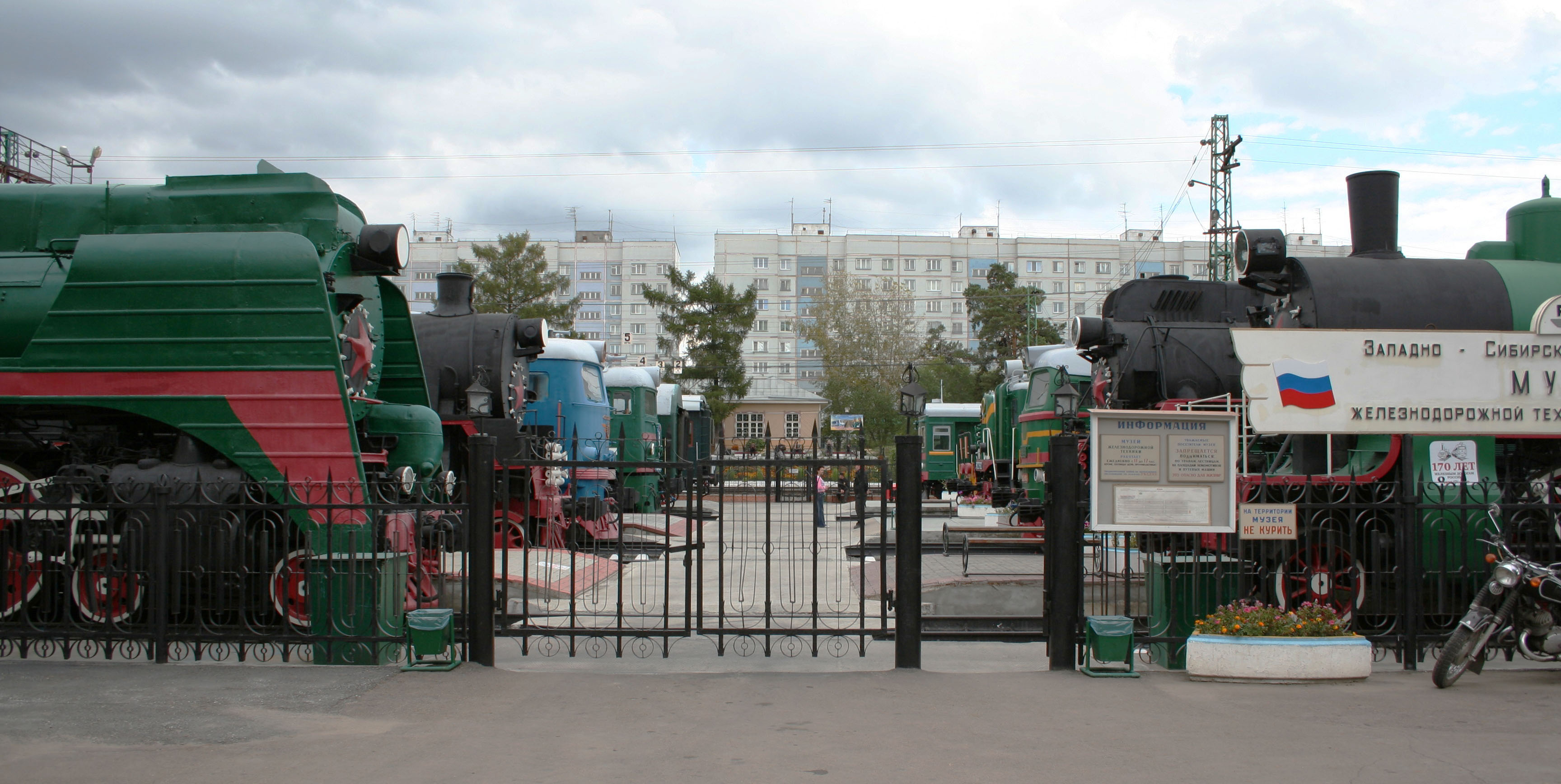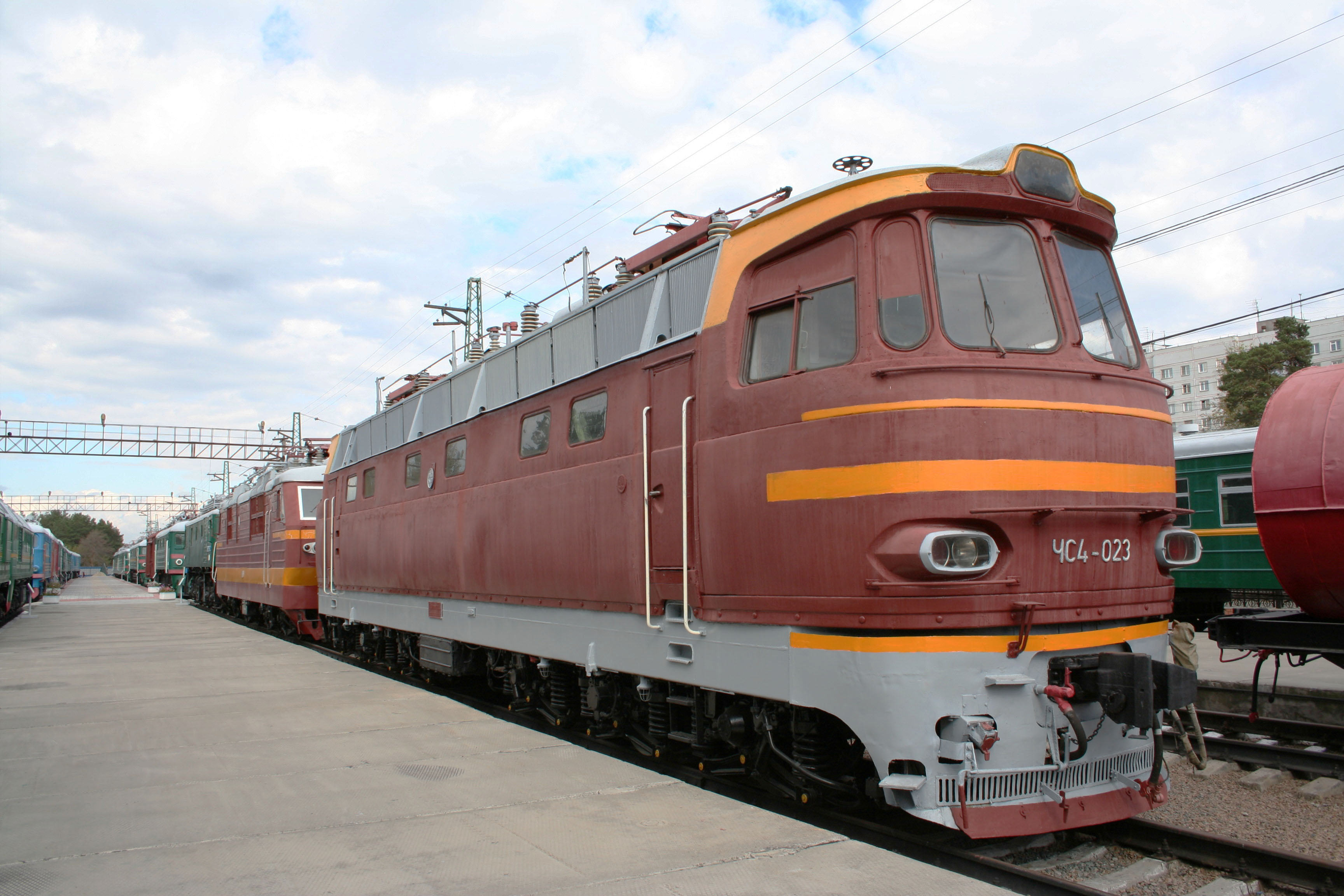Museum For Railway Technology Novosibirsk on:
[Wikipedia]
[Google]
[Amazon]
The Museum for Railway Technology Novosibirsk ( Russian: Новосибирский музей железнодорожной техники, ''Nowosibirski musei schelesnodoroschnoi techniki'') is a
Retrieved 31 Mai 2012 and 18 November 2017. The open-air museum presents 17 steam locomotives, 15 diesel locomotives, 12 electro locomotives, carriages and
The open-air museum presents 17 steam locomotives, 15 diesel locomotives, 12 electro locomotives, carriages and Музей железнодорожной техники в Новосибирске отмечает 10 лет со дня открытия (Russian for: Museum for Railway Technology Novosibirsk celebrates 10th anniversary.) Retrieved 31 May 2012 and 18 November 2017.
/ref>

 Steam locomotives П36 (097), 9П (-2), Ea (N3078), L (-3993), L (N013), LW (040), SO (N17-508), Su (213-42), FD20 (588), Em (725-12), Er (789-91) and a replica made in 2002 of the first steam locomotive built by
Steam locomotives П36 (097), 9П (-2), Ea (N3078), L (-3993), L (N013), LW (040), SO (N17-508), Su (213-42), FD20 (588), Em (725-12), Er (789-91) and a replica made in 2002 of the first steam locomotive built by


 Diesel locomotives LTS M62 (500), ТЭМ2 (2110), CzME3 (-5452), CzS3 (-73), TE10L, TE10M (-2670), 2TE116 (-037), TGM23b (1026), TGM1 (2925), TGM4 (1676), TGK (8626), TE2 (289), TEM2 (1768), TEM15 (-016), TEP60 (-1195), TEP80 (-0001), TE3 (-7376), TE7 (-096), TEP10 (082), CzME2 (-508), CzS2 (-039) and CzS4 (-023)
Diesel locomotives LTS M62 (500), ТЭМ2 (2110), CzME3 (-5452), CzS3 (-73), TE10L, TE10M (-2670), 2TE116 (-037), TGM23b (1026), TGM1 (2925), TGM4 (1676), TGK (8626), TE2 (289), TEM2 (1768), TEM15 (-016), TEP60 (-1195), TEP80 (-0001), TE3 (-7376), TE7 (-096), TEP10 (082), CzME2 (-508), CzS2 (-039) and CzS4 (-023)

 Electric locomotives WL22m (N 1932), WL23 (501), WL80c (005), WL80c (1066-2), WL8 (-1232), WL10 (271) and WL60k (-649)
Electric locomotives WL22m (N 1932), WL23 (501), WL80c (005), WL80c (1066-2), WL8 (-1232), WL10 (271) and WL60k (-649)

railway museum
A railway museum is a museum that explores the history of all aspects of rail related transportation, including: locomotives ( steam, diesel, and electric), railway cars, trams, and railway signalling equipment. They may also operate historic e ...
in Novosibirsk
Novosibirsk (, also ; rus, Новосиби́рск, p=nəvəsʲɪˈbʲirsk, a=ru-Новосибирск.ogg) is the largest city and administrative centre of Novosibirsk Oblast and Siberian Federal District in Russia. As of the Russian Census ...
. It was formally opened in 2000 near to Sejatel railway station (станцией Сеятель), at the Novosibirsk– Berdsk line and is the second largest transport museum in Russia after the Central Railway Museum in St Petersburg
Saint Petersburg ( rus, links=no, Санкт-Петербург, a=Ru-Sankt Peterburg Leningrad Petrograd Piter.ogg, r=Sankt-Peterburg, p=ˈsankt pʲɪtʲɪrˈburk), formerly known as Petrograd (1914–1924) and later Leningrad (1924–1991), i ...
.
History
Nikolai Akulinin was the founder of the museum. He worked from 1946 to 1955 at the North Caucasus Railway and since 1955 at various railway inSiberia
Siberia ( ; rus, Сибирь, r=Sibir', p=sʲɪˈbʲirʲ, a=Ru-Сибирь.ogg) is an extensive geographical region, constituting all of North Asia, from the Ural Mountains in the west to the Pacific Ocean in the east. It has been a part of ...
. After getting retired in 1984, he started to work on the collection of the museum for several years, storing the relevant exhibits on the circular track of the All-Russian Railway Research Institute. In 1998 the West Siberian Railway endorsed the establishment of a museum. Preparatory work lasted until 2000, when the museum was formally inaugurated on 4 August 2000 during the celebrations of the Railway Day. Contrary to his wish, it was named after Nikolai Akulininas, who was also its first director.Новосибирский музей железнодорожной техники им. Н. А. Акулинина. (Russian for: Museum for Railway Technology. N. A. Akulinina).Retrieved 31 Mai 2012 and 18 November 2017.
 The open-air museum presents 17 steam locomotives, 15 diesel locomotives, 12 electro locomotives, carriages and
The open-air museum presents 17 steam locomotives, 15 diesel locomotives, 12 electro locomotives, carriages and paraphernalia
Paraphernalia most commonly refers to a group of apparatus, equipment, or furnishing used for a particular activity. For example, an avid sports fan may cover their walls with football and/or basketball paraphernalia.
Historical legal term
In l ...
from the 19th and 20th century, mainly from Russian and Soviet production. In addition, some locomotives from the United States, Czechoslovakia
, rue, Чеськословеньско, , yi, טשעכאסלאוואקיי,
, common_name = Czechoslovakia
, life_span = 1918–19391945–1992
, p1 = Austria-Hungary
, image_p1 ...
and Hungary
Hungary ( hu, Magyarország ) is a landlocked country in Central Europe. Spanning of the Carpathian Basin, it is bordered by Slovakia to the north, Ukraine to the northeast, Romania to the east and southeast, Serbia to the south, Croatia a ...
are exhibited. The museum has also a collection of mainly Soviet cars, and since 2006 some foreign classic cars from.
The museum has also an educational obligation: It organises seminars and conferences, which cover a wide variety of railway related topics./ref>
Exhibits
Steam locomotives


Yefim and Miron Cherepanov
Yefim Alekseyevich Cherepanov (russian: Ефи́м Алексе́евич Черепа́нов; 1774 – 1842), and his son Miron Yefimovich Cherepanov (russian: Миро́н Ефи́мович Черепа́нов; 1803 – 1849) were Russian in ...
in 1833–1834.
Diesel locomotives



Electric locomotives


Carriages

Leon Trotsky
Lev Davidovich Bronstein. ( – 21 August 1940), better known as Leon Trotsky; uk, link= no, Лев Давидович Троцький; also transliterated ''Lyev'', ''Trotski'', ''Trotskij'', ''Trockij'' and ''Trotzky''. (), was a Russian ...
's private carriage, hospital carriages, luggage carriages, prison carriages, tank cars including those for spirits, cooling cars, garbage cars, grain cars, cars for transporting liquid metal, fire engines and snow plows.
References